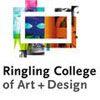Located in Savannah’s National Historic Landmark District, Savannah College of Art and Design (SCAD) provides more degrees and specializations than any other art and design school in the U.S. This fully accredited, nonprofit institution also houses six galleries that focus on fashion, film, educational events, and special collections.
For students interested in studying games, Savannah College of Art and Design provides nearly a dozen options leading to a BA, BFA, MA, MFA, or minor. Students can complete all programs in person at the Atlanta or Savannah campus. With the exception of the BFA, all programs may also be completed online via SCADnow. Courses stream online in real time or students may access the courses on their own schedule.
Undergraduate programs include BA and BFA degrees in Game Development. Minors include Concept Design for Animation and Games, Game Development, Game UX, Visual Effects (VFX), Concept Art for Games, Character Technical Direction, and Themed Entertainment Design. Each minor requires 25 credit hours. At the graduate level, students can earn an MA or MFA in Interactive Design and Game Development (IDGD)
Across all programs, students have opportunities to gain hands-on experience through internships with local and national studios. Students will also work individually and in teams to complete projects on campus and in state-of-the-art customized facilities within the SCAD Digital Media Center and Montgomery Hall.
Launched in the Fall of 2009, the SCAD Digital Media Center is a 60,000 square feet facility that houses SCAD Film Studios, an in-house theater, a green screen lab, and a real-world studio environment. The Center sits in the former home of the Atlanta TV Station WXIA. Montgomery Hall has more than 130,000 square feet of space including studio classrooms; 800+ computers; stop-motion sets; a green-screen stage; motion-capture technology; and AR/VR labs.
Other program benefits include quarterly meetings with industry professionals from studios such as Electronic Arts (EA), Zynga, and Activision Blizzard. During these meetings, SCAD game design students have the opportunity to interview and present their portfolios.
The Game Development BA is a 180 credit hour program, including 50 credits in the major. To enhance the degree, students may select 20 credits of free electives. Course examples include Digital Communication; Programming; Game Design; Game Art; Game Tech; Digital Design Aesthetics; and Game Development Studio I.
Like the BA, the SCAD Game Development BFA requires 180 credit hours, but students will complete 75 credits in the major. To enhance the degree, students may select 25 credits of free electives. In addition to all of the courses listed for the BA program, BFA students will select from courses such as Physical Computing; Information Architecture; and Interactive Web Design. BFA students will also complete the Game Development Portfolio course, Game Development Studio II; and Game Development Postproduction.
The IDGD MA at SCAD requires 45 credit hours of study. The MFA requires 90. Both programs provide two concentration options including Game Development or Interactive Design. Students in the Game Development concentration will take courses such as Game Art - Virtual World Building; Game Design - Immersive Level Design; Game Tech - Real-Time Particles and Effects; Game Art - Art Direction and Look Development; and Game Design-Professional Production Pipeline. Students also have the option to take one 700-level game design course or other area such as animation, interaction design, visual effects, motion media design, or sequential art.
Students in the Interactive Design concentration will take courses such as Human Experience Prototyping; Human-Centered Interactive Design; Innovative Systems for Digital Convergence; Physical Computing for Immersive Environments; User Interface Design for Virtual Communities; and Physical Computing for Tangible Interfaces.
Interactive Design Students also have the option to complete a 700-level course in game design or other area such as animation, industrial design, motion media design, service design, or design management.
All SCAD IDGD MFA students will complete the Evidence-Based Design Interactivity and Gaming course, along with three thesis studio courses including Thesis Studio I - Research and Ideation; Thesis Studio II - Production and Prototyping; and Thesis Studio III - Validation and Documentation. This Thesis Studio is the culminating experience for the program.
All IDGD MA students will complete the Interactive Design and Game Development MA Final Project. For this culminating experience, students will produce an industry-level project from research and conceptualization to implementation. All projects will incorporate everything the student has learned throughout the program.
Graduates of the Game Design and Development programs at Savannah College of Art and Design are prepared to pursue careers in all areas of game design and development, augmented and virtual reality (AR/VR), animation, film and video, software development, education, research, advertising, and more.
Program alumni are routinely hired places such as Electronic Arts (EA), Apple, Epic Games, Activision Blizzard, Riot Games, Gearbox Software, Microsoft, Adobe, YouTube, Meta, Zynga, Sucker Punch Productions, Firaxis Games, and Bethesda.
Savannah College of Art and Design opened its doors in the renovated Savannah Volunteer Guards Armory in September 1979. The school launched with one classroom and an administration building (Poetter Hall), 11 faculty, and just 71 students. Today, SCAD serves more than 17,500 students across campuses in Atlanta, Savannah, and Lacoste, France. Programs include more than 100 degrees and 75+ minors and certificates.
Savannah College of Art and Design is accredited by the Southern Association of Colleges and Schools Commission on Colleges (SACSCOC), the Council for Interior Design Accreditation (CIDA), and the National Architecture Accrediting Board (NAAB).






















